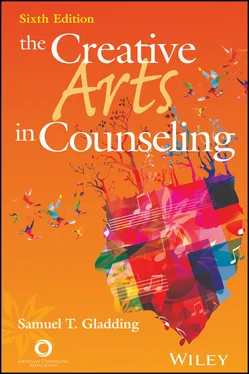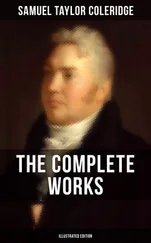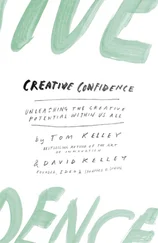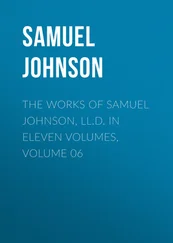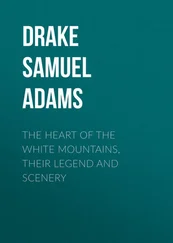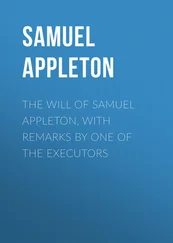Samuel T. Gladding - The Creative Arts in Counseling
Здесь есть возможность читать онлайн «Samuel T. Gladding - The Creative Arts in Counseling» — ознакомительный отрывок электронной книги совершенно бесплатно, а после прочтения отрывка купить полную версию. В некоторых случаях можно слушать аудио, скачать через торрент в формате fb2 и присутствует краткое содержание. Жанр: unrecognised, на английском языке. Описание произведения, (предисловие) а так же отзывы посетителей доступны на портале библиотеки ЛибКат.
- Название:The Creative Arts in Counseling
- Автор:
- Жанр:
- Год:неизвестен
- ISBN:нет данных
- Рейтинг книги:3 / 5. Голосов: 1
-
Избранное:Добавить в избранное
- Отзывы:
-
Ваша оценка:
- 60
- 1
- 2
- 3
- 4
- 5
The Creative Arts in Counseling: краткое содержание, описание и аннотация
Предлагаем к чтению аннотацию, описание, краткое содержание или предисловие (зависит от того, что написал сам автор книги «The Creative Arts in Counseling»). Если вы не нашли необходимую информацию о книге — напишите в комментариях, мы постараемся отыскать её.
*To purchase print copies, please visit the ACA website here
*Reproduction requests for material from books published by ACA should be directed to permissions@counseling.org
The Creative Arts in Counseling — читать онлайн ознакомительный отрывок
Ниже представлен текст книги, разбитый по страницам. Система сохранения места последней прочитанной страницы, позволяет с удобством читать онлайн бесплатно книгу «The Creative Arts in Counseling», без необходимости каждый раз заново искать на чём Вы остановились. Поставьте закладку, и сможете в любой момент перейти на страницу, на которой закончили чтение.
Интервал:
Закладка:
Bring clients together cognitively, behaviorally, and mentally by giving them experiences that link them with their past, their present, and their future
Help clients appreciate the beauty and wisdom of cultural backgrounds
Promote positive feelings and affect that can be tapped when celebrating and coping with life’s highs and lows
Engender hope, confidence, and insight in persons who have never realized their potential for living life to the fullest
Another way of summing up these benefits of the creative arts is to say that they are likely to contribute to
behavioral activation (a highly effective treatment for depression),
self-efficacy/mastery,
overcoming experiential avoidance,
strengthening personal identity (an evolving process), and
social connectedness (Neilsen et al., 2016).
Numerous studies, especially with children, show the impact of the arts in different cultures, such as those by Omizo and Omizo (1989) with Hawaiian children, Constantino et al. (1986) with Latino children, Appleton and Dykeman (1996) with Native American children, and Woodard (1995) with Black children. The point is that there are multiple ways of using the arts in helping clients from different cultures and circumstances (Ishiyama & Westwood, 1992). Overall, creative arts interventions, such as visual arts, storytelling, dance, music, imagery, poetry, drama, writing, drawing, and movement, improve psychosocial functioning, spirituality, and meaning making in numerous populations (Phillips & Becker, 2019).
Creative Reflection
Should every therapeutic approach in counseling be generated from a theory? Why or why not? What are the advantages and disadvantages of having a counseling approach based on a theory?
The SCAMPER Model as a Way of Becoming More Creative
Becoming professionally creative is important if counselors are going to be able to use the arts effectively. The creative arts may be expressed therapeutically in a number of ways, and the more ways clinicians know, the more effective they can be. One of the easiest ways to remember something about creativity and how the arts may be used in counseling is to gain knowledge of the SCAMPER model. This model was formulated in 1971 by Robert Eberle. He devised the mnemonic device SCAMPER as a way to cultivate and reward imagination and talent in children as young as 3 years old. His intent was to help them develop into healthy, mentally alert, and productive adults. Strictly defined, the word scamper means to be playful, as expressed in a hurried run or movement. However, the intent of the SCAMPER model is not to describe physical movement but to foster imaginative and action-oriented strategies for being creative. The letters in the word stand for activities that may help people become more self-sufficient, more productive, and happier through learning to exercise one or more of these options in life.
In more recent years, the SCAMPER model has been applied to the counseling arena to help counselors by providing a checklist of suggestions that can both prompt and stimulate them into formulating ideas in themselves and their clients (Buser et al., 2011; Gladding & Henderson, 2000). The specific letters in SCAMPER and an example of each follow:
S = Substitute: To have a person or thing act or serve in place of another. By looking for something to substitute, people can come up with new ideas and better ways of living. For example, a person can use applesauce for butter in cooking or say “yes and” instead of “yes but” in conversations with others.
C = Combine: To bring together, to unite to achieve a different product/process or to enhance synergy. For example, artistic movements, such as in dance, may come together over the course of a recital to make a performance.
A = Adopt/Adapt: To adjust to suit a condition or purpose. For example, as people mature, they adjust to or alter their life roles, such as being a parent.
M = Modify: To alter, to change the form or quality; to enlarge, to make greater in form or quality; to make smaller, lighter, slower, less frequent. For example, the television character MacGyver is constantly modifying items in his environment to help himself and others escape harrowing situations or defeat adversaries.
P = Put to Other Uses: To use something for purposes other than those originally intended. Think of what people can reuse. For example, someone could use paper clips to make fishing hooks instead of clipping papers together or could grow a plant to become more socialized and caring.
E = Eliminate: To remove, omit, or get rid of a quality totally or in part. For example, a person can go on a diet, practice thought stopping, or stop excessive talking.
R = Reverse/Rearrange: To place opposite or contrary to, to turn around; to change the order in which an activity is done. For example, people may rearrange the emphasis they put on events in their lives, such as making a failure curriculum to highlight what they have learned in unsuccessful endeavors instead of accomplishments.
When one applies the SCAMPER model, innovative, artistic, and creative responses are often made in all aspects of life. For instance, in substitution, mild words may be substituted for harsh words to modify an angry situation. In combination, clients may be taught how to act as well as speak appropriately in learning to put together social skills. Likewise, in adapting, the counselor may help clients learn how to be more assertive or less boisterous in specific situations. In modifying, clients may come to realize that they have a choice as to how strongly to express themselves when they encounter others. A magnifying or minifying of their behavior will result in a change in the way they are seen by those around them. Similarly, if clients realize they get better results when they eliminate a behavior, they may do so and become more content. Thus, through hard work and effort, people may eliminate shouting or shyness if either causes them interpersonal problems. Finally, reversing or rearranging what they do can give people a whole new outlook on life. Clients who change their driving routes when going places or their daily routines in personal interactions may come to see their settings and colleagues in a whole new light or from a different perspective.
Numerous creative arts techniques come into play when applying the SCAMPER model. For instance, when the words of a song are substituted, the emphasis may change, and clients may see what a difference new words make. Instead of “Mary had a little lamb,” a substituting of words might be “Mary had a rock-and-roll jam.” The difference is considerable. Likewise, if someone is adapting Portia Nelson’s (1993) poem “Autobiography in Five Short Chapters” to be acted as a drama, reading the poem may give them a better feel for what the words really mean as they put them in motion. A way of emphasizing modification is to have clients draw a picture of a sun, a cloud, and a tree together (see Figure 1). Then, in a similar space, have them again draw these elements in relationship to one another but with one of the elements magnified or minified. In the process, clients may come to recognize that they cannot change one thing in the environment without modifying another.
Creative Reflection
There are many ways to apply the SCAMPER model when working with clients or reminding yourself how to be more creative. As you read this book, ask yourself in what way the exercises suggested here fit into the SCAMPER format. Be as specific as you can.
Advantages and Limitations of the Creative Arts in Counseling
Before I close this introductory chapter, it is crucial to point out the pragmatic advantages of using the arts in counseling and also their limitations. Several pluses and minuses are mentioned in this section, starting with those aspects that are most positive.
Читать дальшеИнтервал:
Закладка:
Похожие книги на «The Creative Arts in Counseling»
Представляем Вашему вниманию похожие книги на «The Creative Arts in Counseling» списком для выбора. Мы отобрали схожую по названию и смыслу литературу в надежде предоставить читателям больше вариантов отыскать новые, интересные, ещё непрочитанные произведения.
Обсуждение, отзывы о книге «The Creative Arts in Counseling» и просто собственные мнения читателей. Оставьте ваши комментарии, напишите, что Вы думаете о произведении, его смысле или главных героях. Укажите что конкретно понравилось, а что нет, и почему Вы так считаете.
